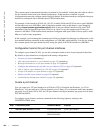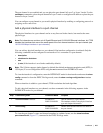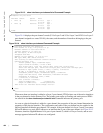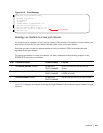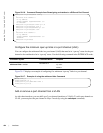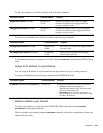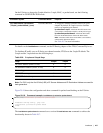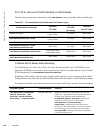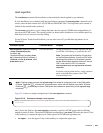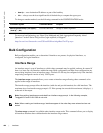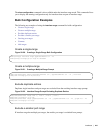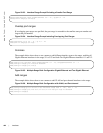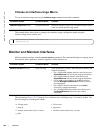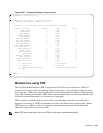
438 | Interfaces
www.dell.com | support.dell.com
IPv4, IPv6, and non-IP traffic handling on the E-Series
The table below presents the combinations of the load-balance command and their effect on traffic types.
C-Series and S-Series load-balancing
For LAG hashing on C-Series and S-Series, the source IP, destination IP, source TCP/UDP port, and
destination TCP/UDP port are used for hash computation by default. For packets without a Layer 3 header,
FTOS automatically uses
load-balance mac source-dest-mac.
IP hashing or MAC hashing should not be configured at the same time. If you configure an IP and MAC
hashing scheme at the same time, the MAC hashing scheme takes precedence over the IP hashing scheme.
To change the IP traffic load balancing default on the C-Series and S-Series, use the following command:
Table 20-7. The load-balance Commands and Port Channel Types
Configuration Commands
Switched
IP Traffic
Routed
IP Traffic
(IPv4 only)
Switched
Non-IP Traffic
Default (IP 5-tuple)
IP 5-tuple
(lower 32 bits)
IP 5-tuple MAC-based
load-balance ip-selection 3-tuple
IP 3-tuple
(lower 32 bits)
IP 3-tuple MAC-based
load-balance ip-selection mac
MAC-based IP 5-tuple MAC-based
load-balance ip-selection 3-tuple
load-balance ip-selection mac
MAC-based IP 3-tuple MAC-based
load-balance ip-selection packet-based
Packet based: IPV4
No distribution: IPV6
Packet-based MAC-based
load-balance ip-selection packet-based
load-balance ip-selection mac
MAC-based Packet-based MAC-based
Command Syntax Command Mode Purpose
[no] load-balance {ip-selection
[dest-ip | source-ip]} | {mac
[dest-mac | source-dest-mac |
source-mac]} | {tcp-udp enable}
CONFIGURATION Replace the default IP 4-tuple method of balancing
traffic over a port channel. You can select one, two, or
all three of the following basic hash methods
ip-selection [dest-ip | source-ip]—Distribute IP
traffic based on IP destination or source address.
mac [dest-mac | source-dest-mac |
source-mac
]—Distribute IPV4 traffic based on the
destination or source MAC address, or both, along with the
VLAN, Ethertype, source module ID and source port ID.
tcp-udp enable—Distribute traffic based on TCP/UDP
source and destination ports.



